Vincent Van Gogh, Pineapple and D-Day Memorial Day
Friday, June 6, 2014
How to Cut a Pineapple with a Thai Design
Two of my artworks on the walls, Self-portrait with Thai classical motif and Perpetual Suffering of Vincent van Gogh. Vincent van Gogh is looking at the pineapple on the table that I am preparing to cut.
I wonder if Vincent van Gogh had ever eaten pineapple because it is a tropical fruit.
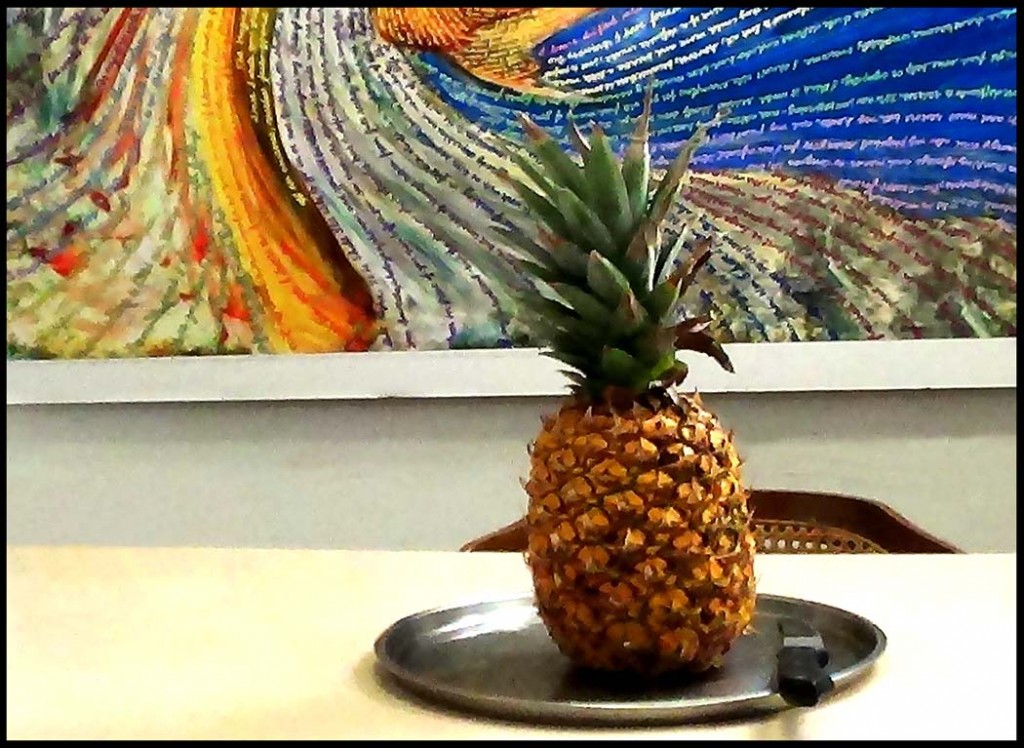 John bought this pineapple when it was still green and fresh. Usually I like to leave it for 4-5 days before I cut. The fruit has a chance to ripen and tastes much sweeter than when fresh.
John bought this pineapple when it was still green and fresh. Usually I like to leave it for 4-5 days before I cut. The fruit has a chance to ripen and tastes much sweeter than when fresh.
 In general I wash my fruits quite well before I consume. I use tap water to wash two times and for the third water I use filtered water and leave the fruits in the filtered water for a couple hours before I eat the fruits. This is for fruits that do not require pealing, for example grapes, strawberries, apples and others. For fruit that needs to be pealed such as mangoes, pineapples and others, I use only tap water but wash it well to remove all the residue of pesticide and other harmful chemicals.
In general I wash my fruits quite well before I consume. I use tap water to wash two times and for the third water I use filtered water and leave the fruits in the filtered water for a couple hours before I eat the fruits. This is for fruits that do not require pealing, for example grapes, strawberries, apples and others. For fruit that needs to be pealed such as mangoes, pineapples and others, I use only tap water but wash it well to remove all the residue of pesticide and other harmful chemicals.
I hope one of these days we will all have our fruits and vegetables or any foods consumed free of chemicals that can harm us. Now we have organic fruits, vegetables and others organic foods items. The majority of poor and uneducated people however do not purchase them because they are too expensive or they do not know the harmful affects of some chemicals used.
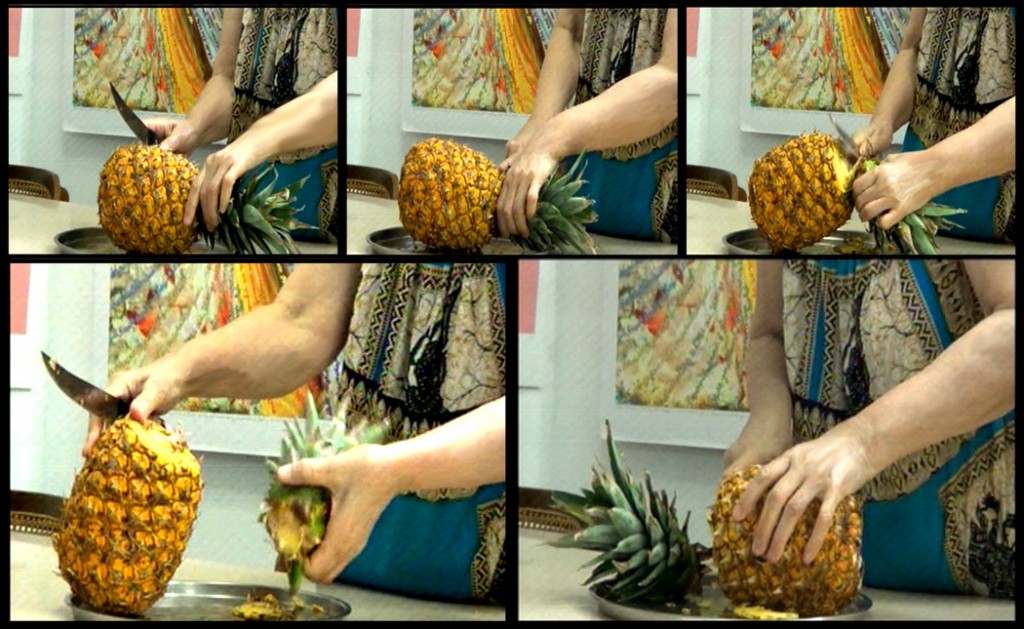 After I wash the pineapple well then I cut the top part out. This top part can put in a container with some water. Leave it in the water until the roots begin to form and we can plant in a pot as a decorative plant. You need to change the water in the container often for the roots to develop.
After I wash the pineapple well then I cut the top part out. This top part can put in a container with some water. Leave it in the water until the roots begin to form and we can plant in a pot as a decorative plant. You need to change the water in the container often for the roots to develop.
An orderly design already exists on the surface of the pineapple.
When I was young in Thailand I loved to watch my mother cut pineapple. I loved to see the design after it was pealed. But there is a trick to get the desired pattern. There are two types of patterns, one is spiral and other is not. The above design is not a spiral and is not the Thai way of cutting.
This is a spiral design.
Use a sharp knife to peal the skin of the pineapple.

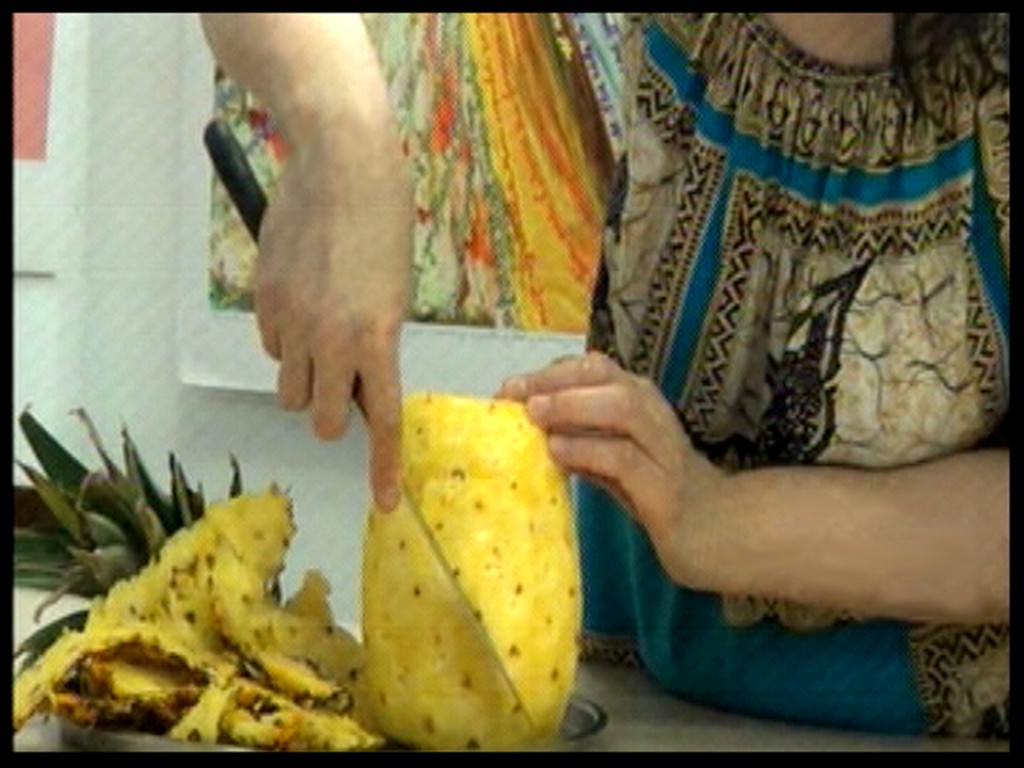 This is not the correct pattern for the Thai method of cutting.
This is not the correct pattern for the Thai method of cutting.
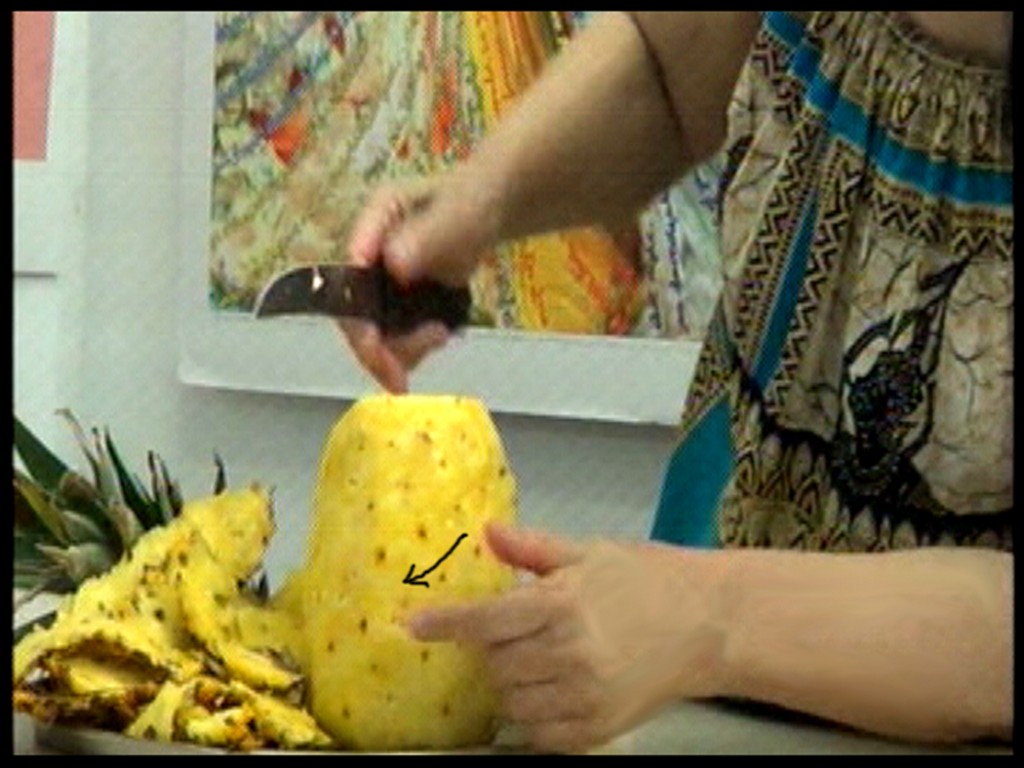 Correct spiral for The Thai method.
Correct spiral for The Thai method.
After the outer layer is pealed away then the spiral design is cut to remove only the eyes of pineapple. For a very ripe pineapple we will see small seeds located here.
This is the way Thai people cut pineapple. I think besides the beautiful appearance one can minimize waste, leaving more pineapple meat.
The more yellow pineapple is sweeter than the light pale color pineapple. If I happen to have the sourer and less sweet pineapple then I add few table spoons of honey to the pineapple after I cut it into smaller sections and leave it in refrigerator for a day before we consume.
This very ripe pineapple is so sweet. I love pineapple and John loves it even more than me because he can eat it without tasting acidic juice biting his tongue. He loves mango also but has an allergic reaction to apples, peaches and some other temperate climate fruits. He loves and can eat all topical fruits that he has tried.
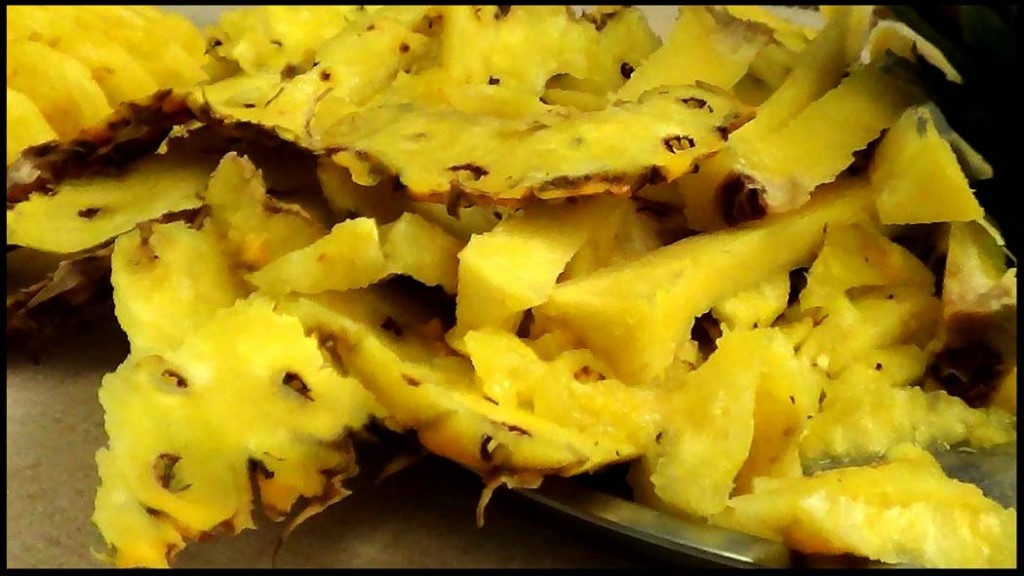
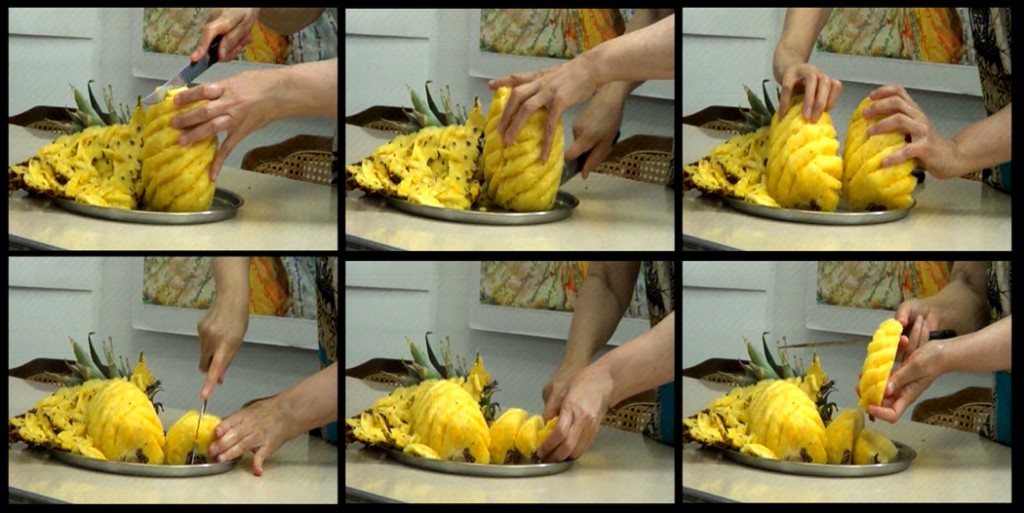
 Cut the pineapple into small sections to eliminate the hard core.
Cut the pineapple into small sections to eliminate the hard core.
Information from Wikipedia
The pineapple (Ananas comosus) is a tropical plant with edible multiple fruit consisting of coalesced berries,[1] and the most economically significant plant in the Bromeliaceae family.[2] Pineapples may be cultivated from a crown cutting of the fruit,[3] possibly flowering in 20–24 months and fruiting in the following six months.[3][4] Pineapple does not ripen significantly post-harvest.[5]
Pineapples are consumed fresh, cooked, juiced, and preserved, and are found in a wide array of cuisines. In addition to consumption, in the Philippines the pineapple’s leaves are used to produce the textile fiber piña– employed as a component of wall paper and furnishings, amongst other uses.[6]
Nutrition
Raw pineapple is an excellent source of manganese (76% daily value (DV) in a one US cup serving) and vitamin C (131% DV per cup serving).[14] Mainly from its stem, pineapple contains a proteolytic enzyme, bromelain, which breaks down protein. If having sufficient bromelain content, raw pineapple juice may be used as a meat marinade and tenderizer. Pineapple enzymes can interfere with the preparation of some foods, such as jelly and other gelatin-based desserts, but would be destroyed during cooking and canning. The quantity of bromelain in the fruit is probably not significant, being mostly in the inedible stalk. Furthermore, an ingested enzyme like bromelain is unlikely to survive intact the proteolytic processes of digestion.
In 2009, Brazil produced 2,206,492 tonnes, closely followed by the Philippines, which produced 2,198,497 tonnes, and Thailand, 1,894,862 tonnes. Total world production in 2009 was 19,488,240 tonnes. The primary exporters of fresh pineapples in 2001 were Costa Rica, 322,000 tons; Côte d’Ivoire, 188,000 tons; and the Philippines, 135,000 tons.[24] Since 2000, the most common fresh pineapple fruit found in U.S. and European supermarkets is a low-acid hybrid that was developed in Hawaii in the early 1970s.[citation needed]
In commercial farming, flowering can be induced artificially, and the early harvesting of the main fruit can encourage the development of a second crop of smaller fruits. Once removed during cleaning, the top of the pineapple can be planted in soil and a new plant will grow. Slips and suckers are planted commercially.
Ethical and environmental concerns
Three-quarters of pineapples sold in Europe are grown in Costa Rica, where pineapple production is highly industrialised. Growers typically use 20 kg of pesticides per hectare in each growing cycle,[25] a process that may affect soil quality and biodiversity. The pesticides – organophosphates, organochlorines and hormone disruptors – have the potential to affect workers’ health and can contaminate local drinking water supplies.[25] Many of these chemicals have potential to be carcinogens, and may be related to birth defects.[25]
Because of commercial pressures, many pineapple workers – 60% of whom are Nicaraguan – in Costa Rica are paid low wages.[quantify] European supermarkets’ price-reduction policies have lowered growers’ incomes.[25] One major pineapple producer contests these claims.[26]
Storage and transport
Some buyers prefer green fruit, others ripened or off-green. A plant growth regulator, Ethephon, is typically sprayed onto the fruit one week before harvest, developing ethylene, which turns the fruit golden yellow. After cleaning and slicing, a pineapple is typically canned in sugar syrup with added preservative.[citation needed]
Pineapple: Fruit
The pineapple is a tropical plant with edible multiple fruit consisting of coalesced berries, and the most economically significant plant in the Bromeliaceae family. Wikipedia
Nutrition Facts: Pineapple
|
Amount Per 1 fruit (905 g) |
|
Calories 452 |
% Daily Value*
|
Total Fat 1.1 g |
1% |
|
Saturated fat 0.1 g |
0% |
|
Polyunsaturated fat 0.4 g |
|
|
Monounsaturated fat 0.1 g |
|
|
Cholesterol 0 mg |
0% |
|
Sodium 9 mg |
0% |
|
Potassium 986 mg |
28% |
|
Total Carbohydrate 119 g |
39% |
|
Dietary fiber 13 g |
52% |
|
Sugar 89 g |
|
|
Protein 4.9 g |
9% |
|
Vitamin A |
10% |
Vitamin C |
721% |
|
Calcium |
11% |
Iron |
14% |
|
Vitamin D |
0% |
Vitamin B-6 |
50% |
|
Vitamin B-12 |
0% |
Magnesium |
27% |
|
*Percent Daily Values are based on a 2,000 calorie diet. Your daily values may be higher or lower depending on your calorie needs. |
Feedback
Sources include: USDA
Link to Wikipedia for more information: https://en.wikipedia.org/wiki/Pineapple
While I was cutting the pineapple I watched the C-SPAN broadcast on the D-Day Memorial and I took some of pictures from television, the following are some of the pictures:
OMAHA BEACH, NORMANDY, FRANCE — U.S. President Barack Obama and other world leaders paid tribute to World War II veterans at a ceremony marking the 70th anniversary of the D-Day invasion that led to the defeat of Nazi Germany.
Link to VOA News:
 President Barack Obama delivered a speech at Omaha Beach on the coast of Normandy, France on Friday, June 6, 2014
President Barack Obama delivered a speech at Omaha Beach on the coast of Normandy, France on Friday, June 6, 2014
Please visit BBC News for more pictures and information
In Pictures: Remembering D-Day
Continue reading the main story
Related Stories
Veterans of World War II, world leaders and royalty have been gathering ahead of the 70th anniversary of D-Day, the biggest amphibious assault in military history.
Many UK veterans will sail on HMS Bulwark from Portsmouth to Normandy on Thursday, while a parade made up of former troops, cadets and serving members of the armed forces is taking place in Portsmouth.
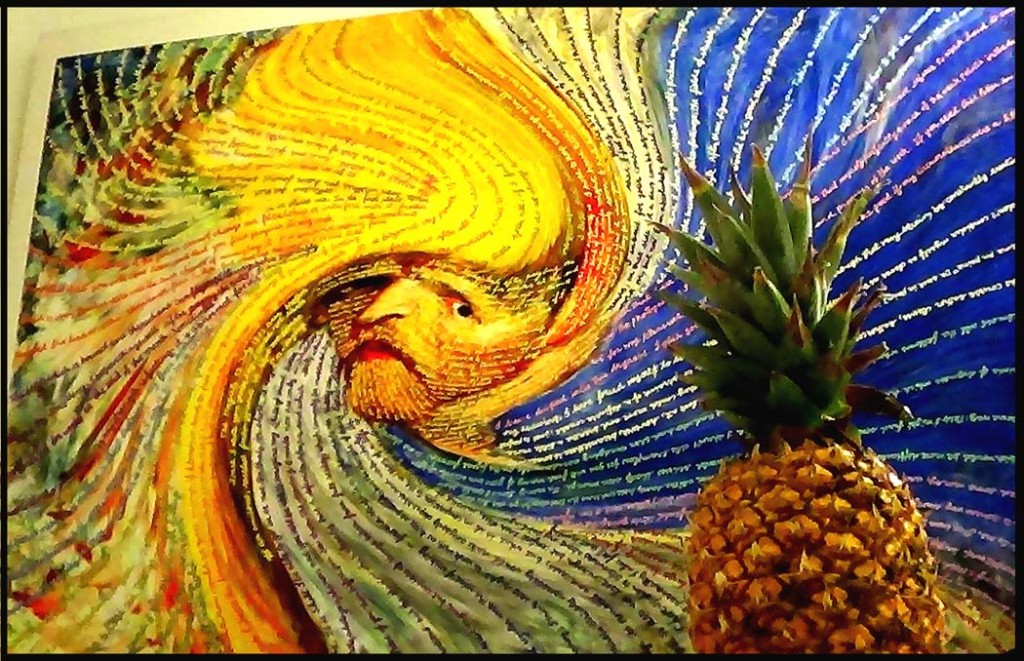


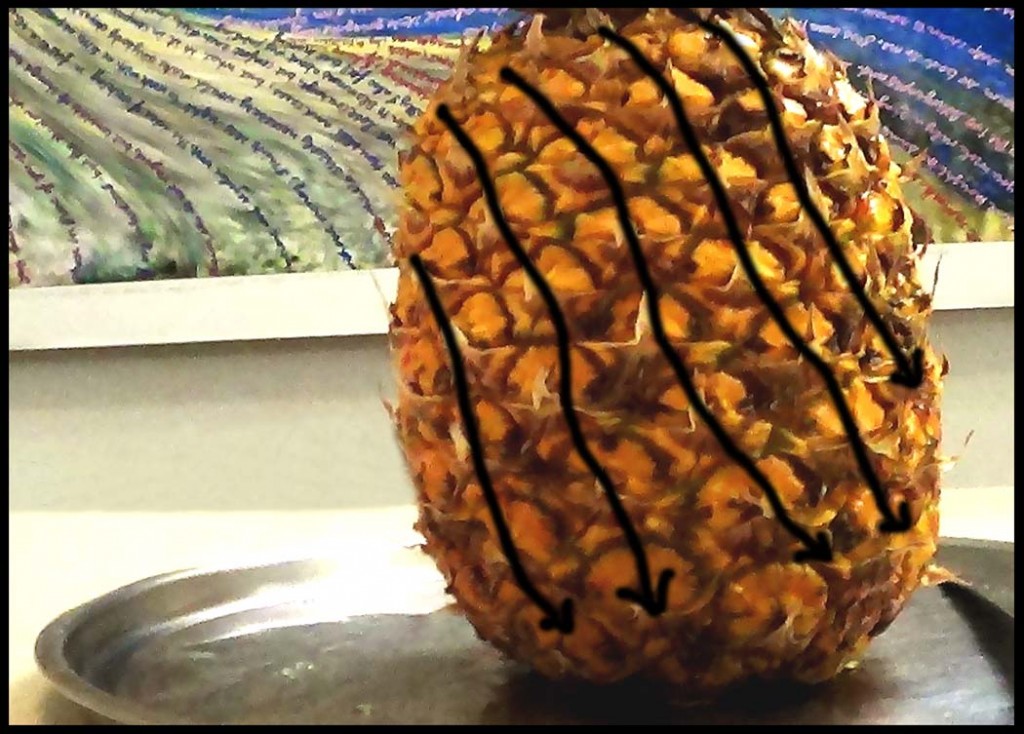
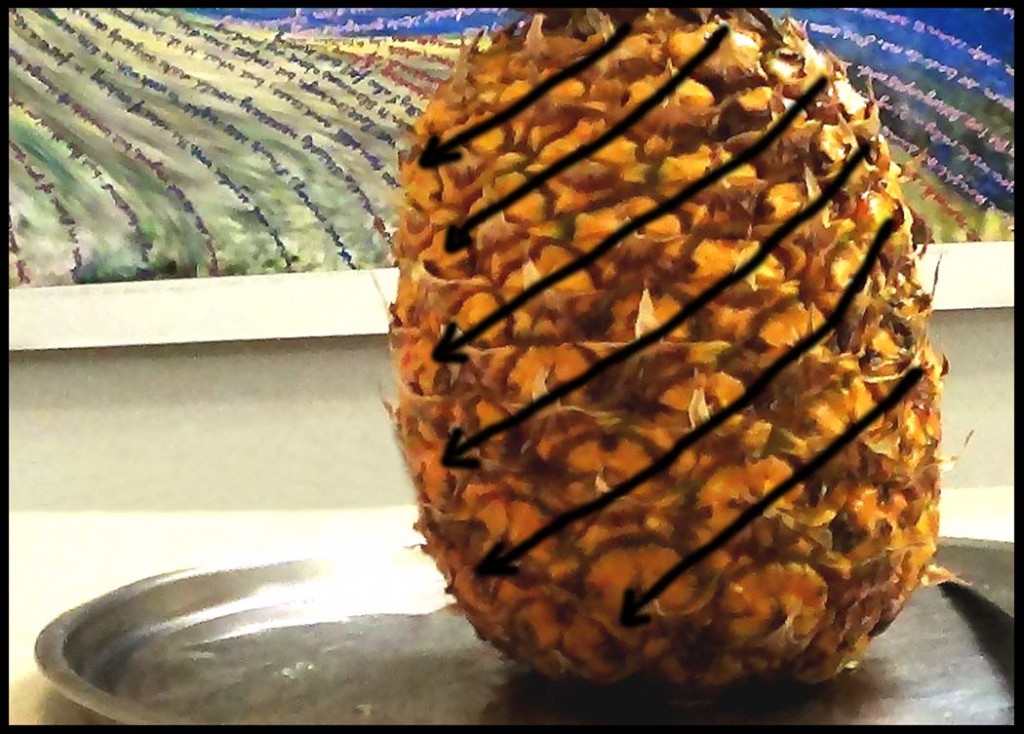
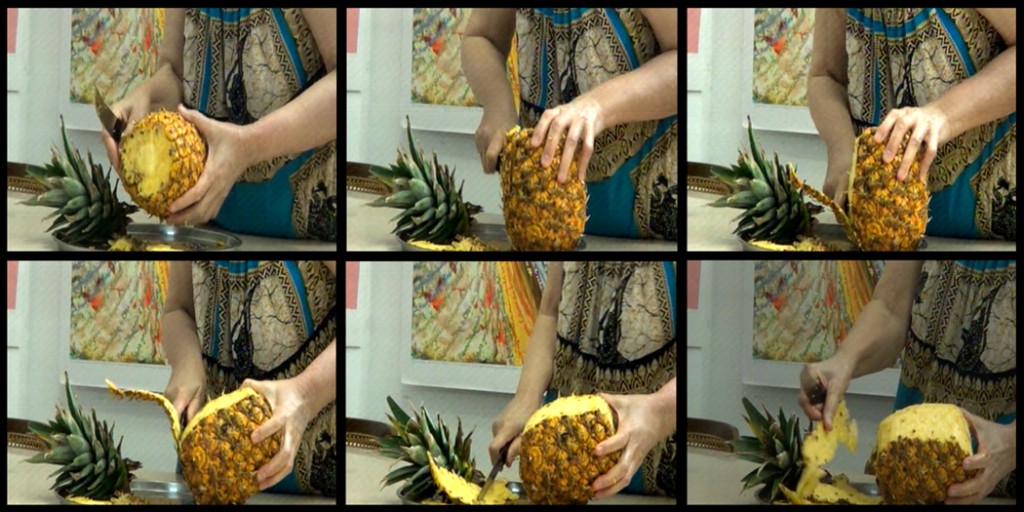
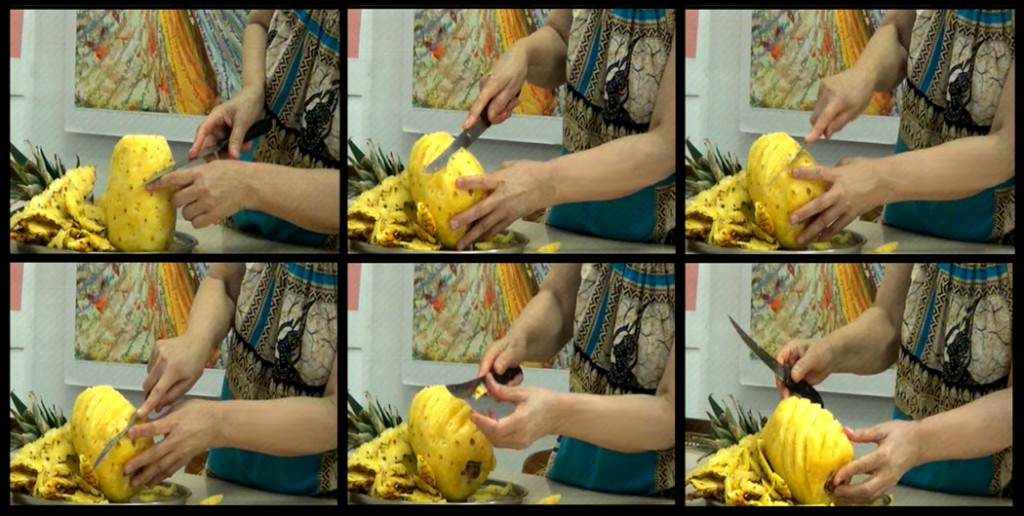
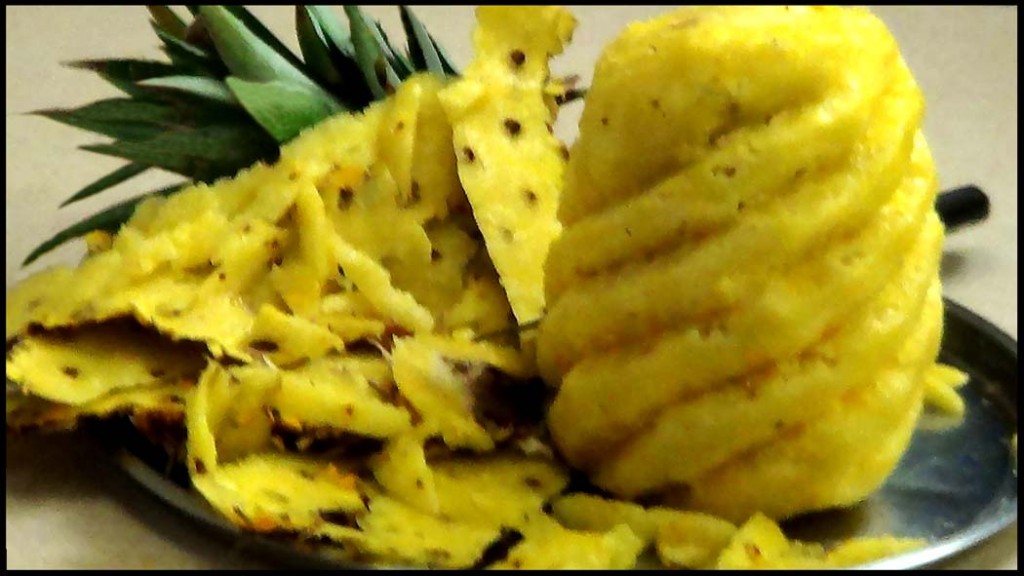
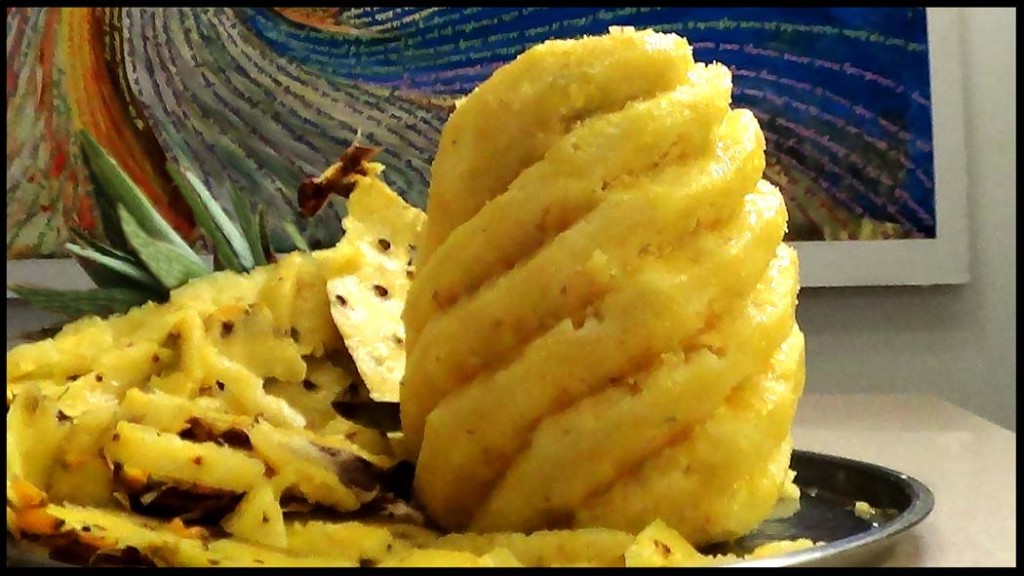
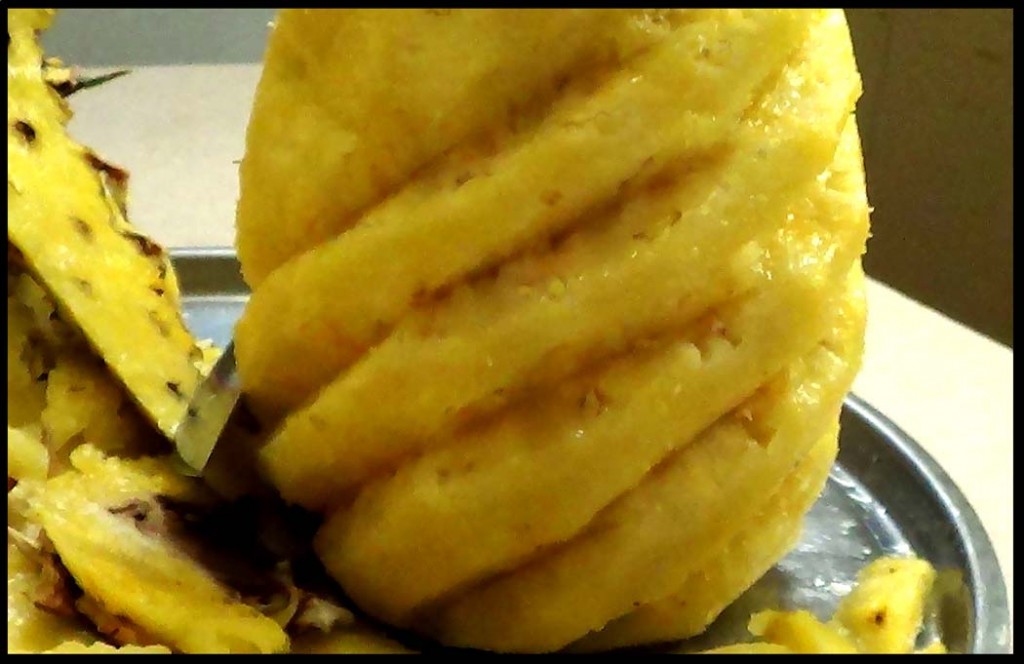
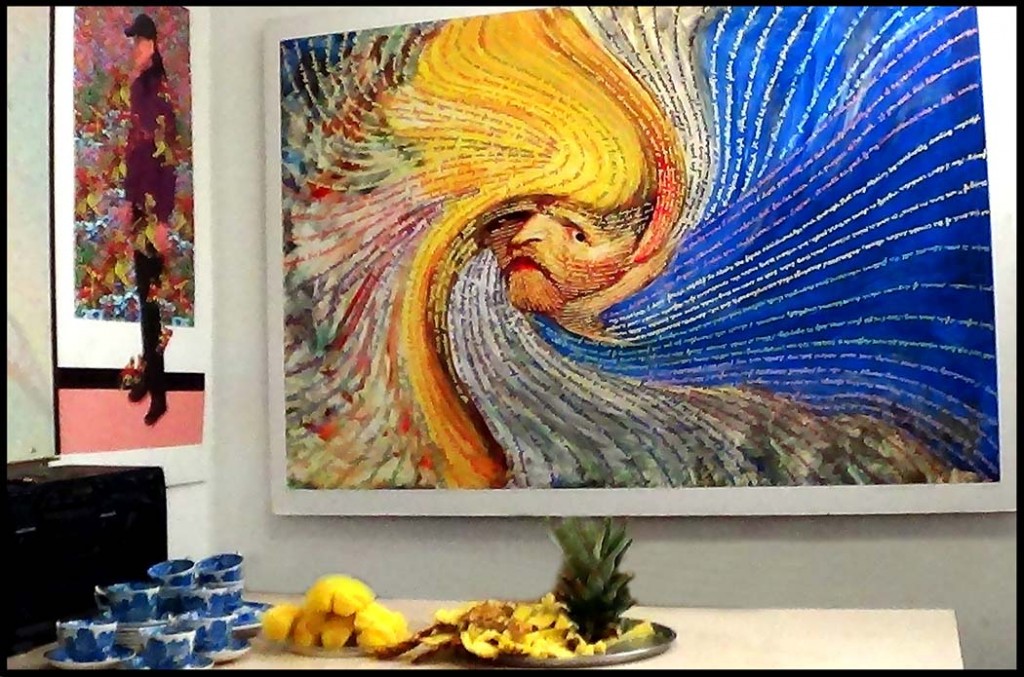
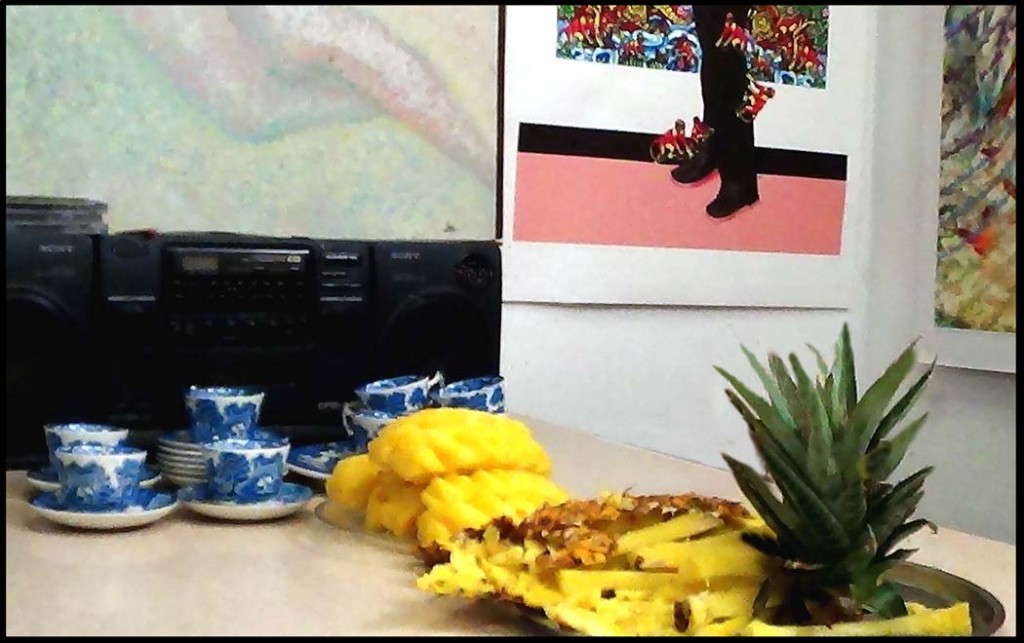
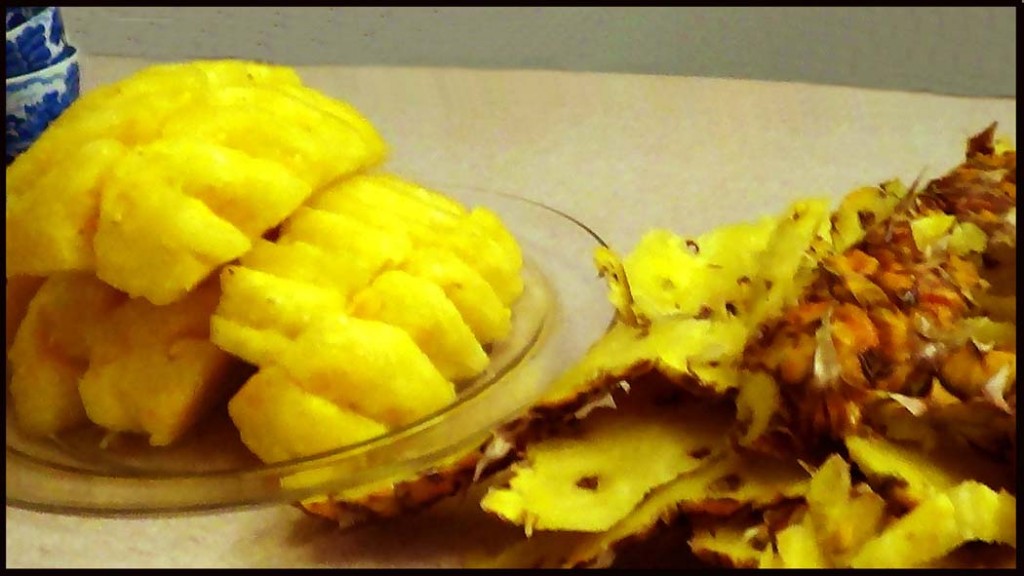

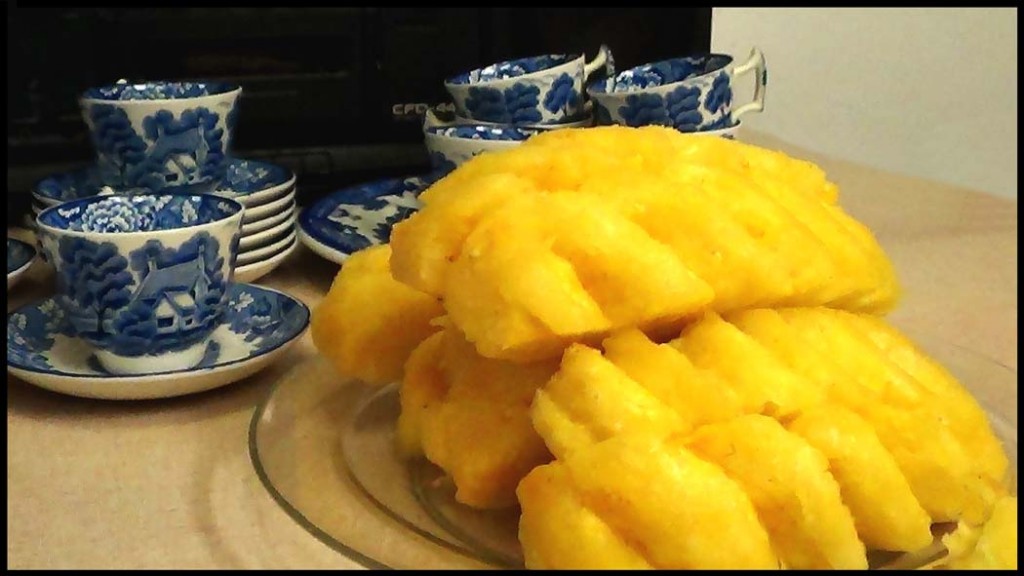
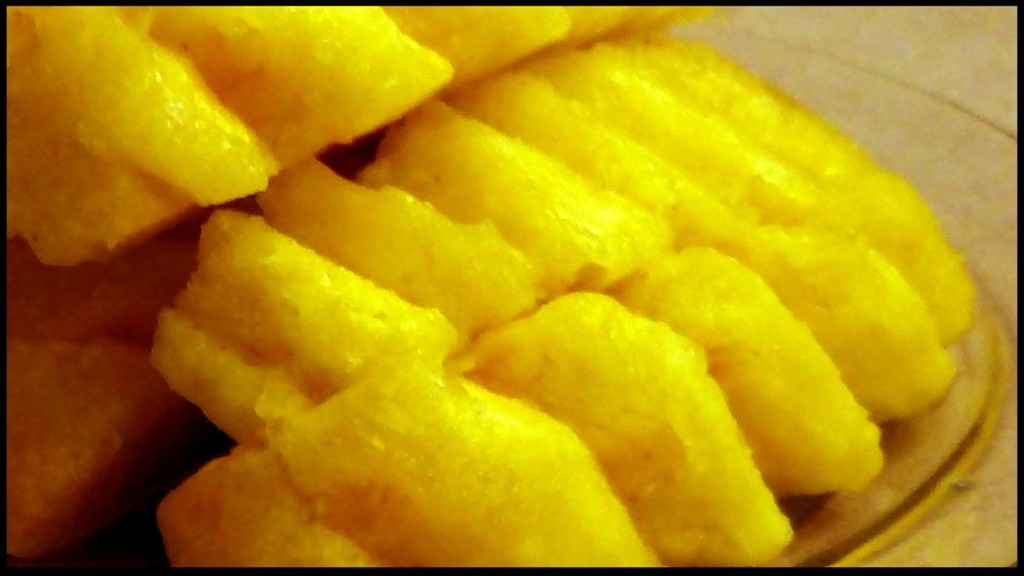

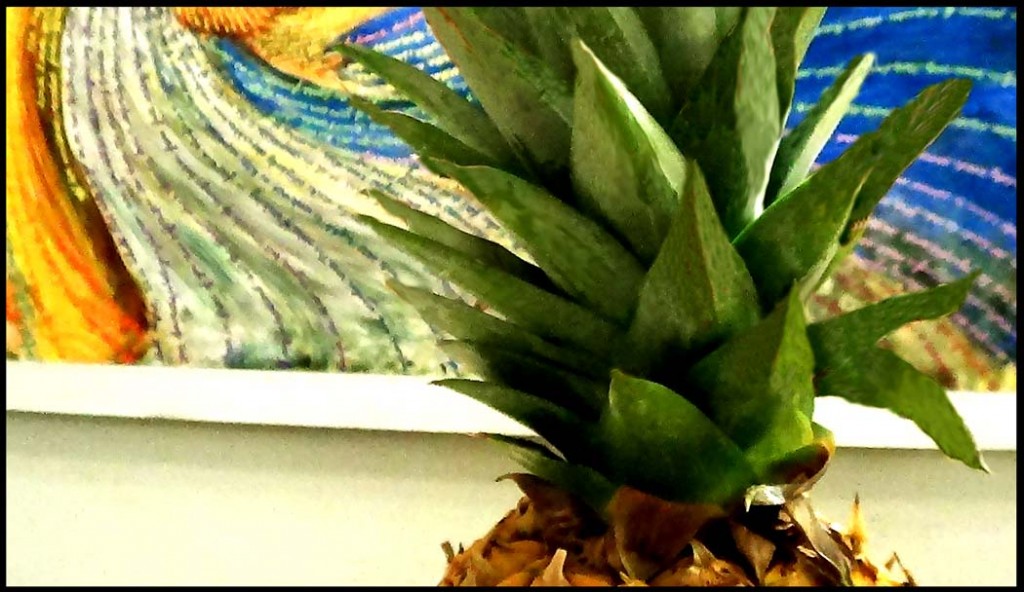
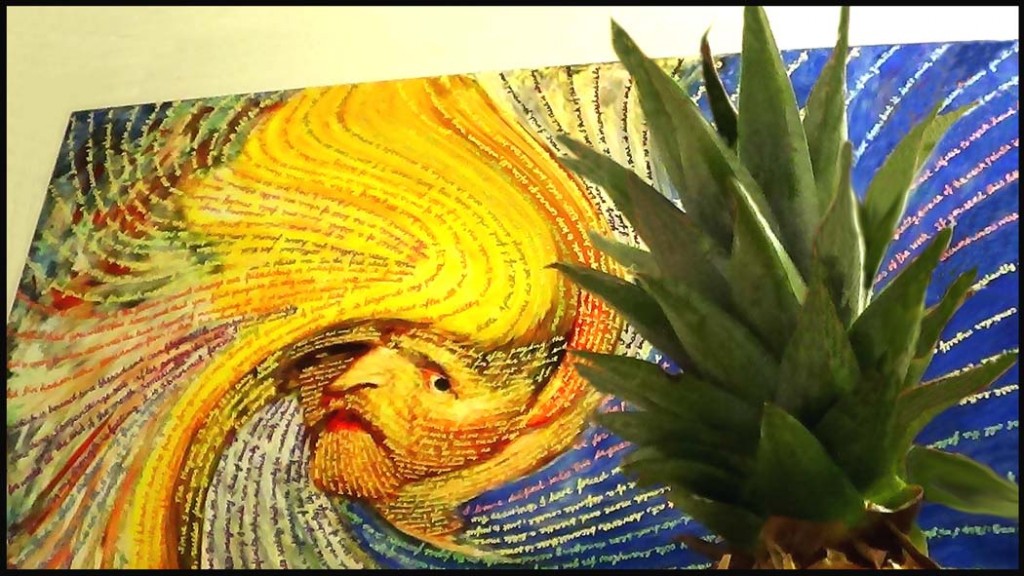







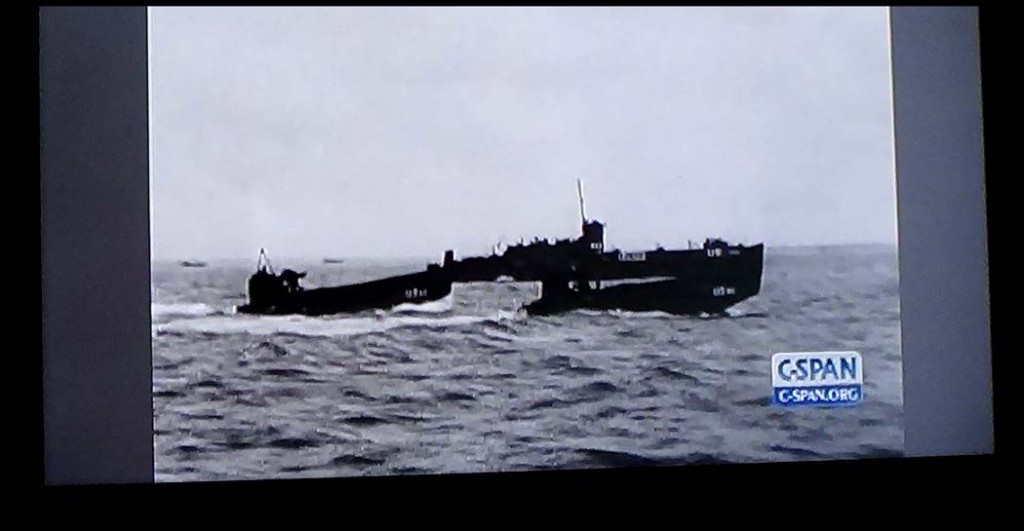


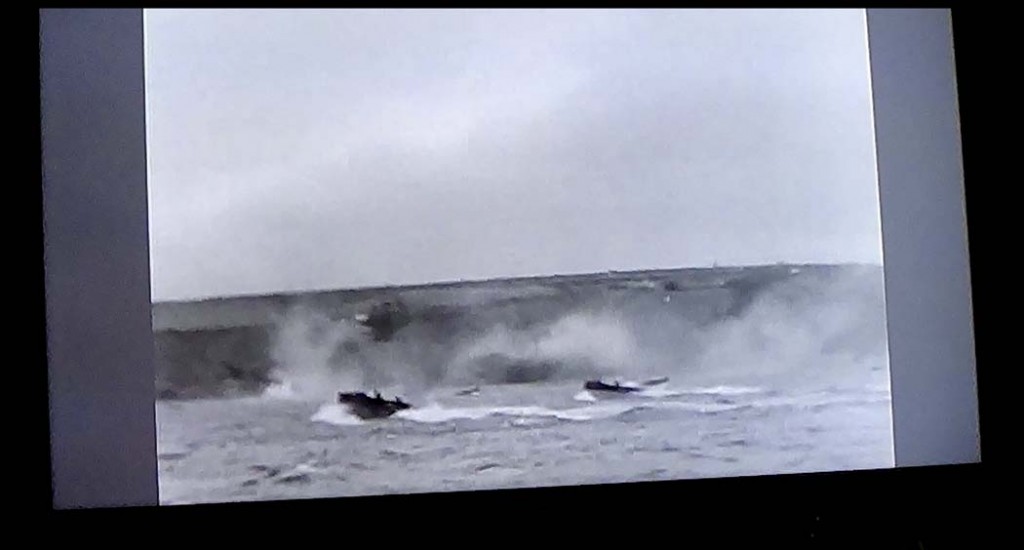




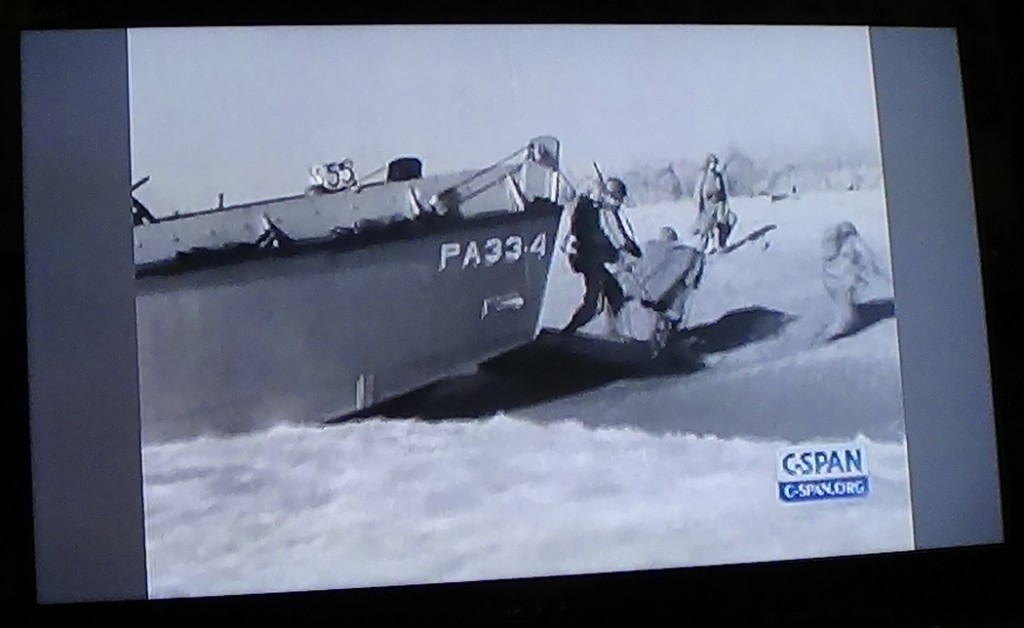
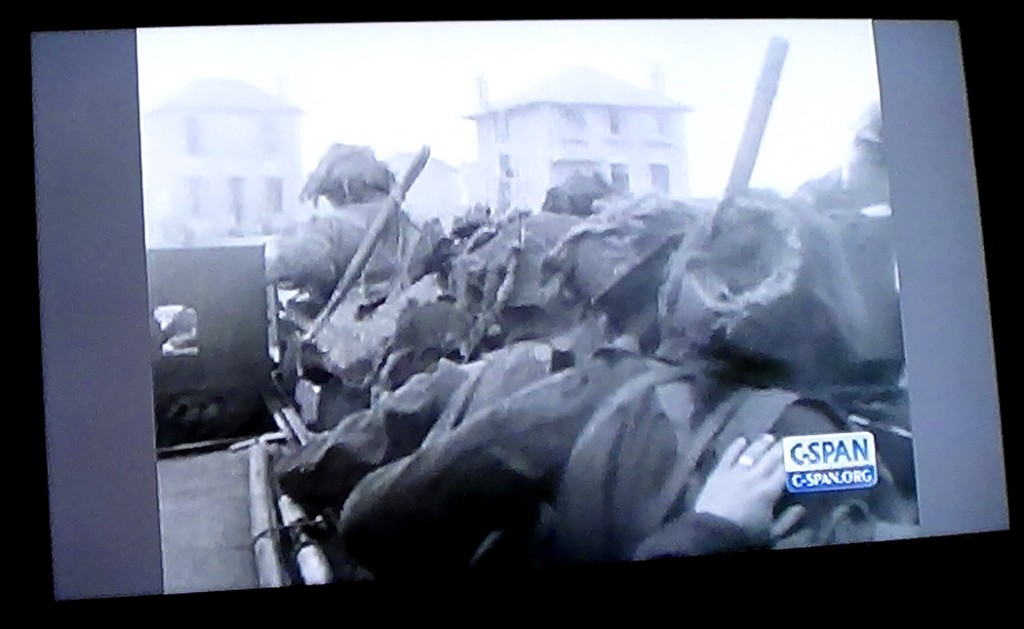
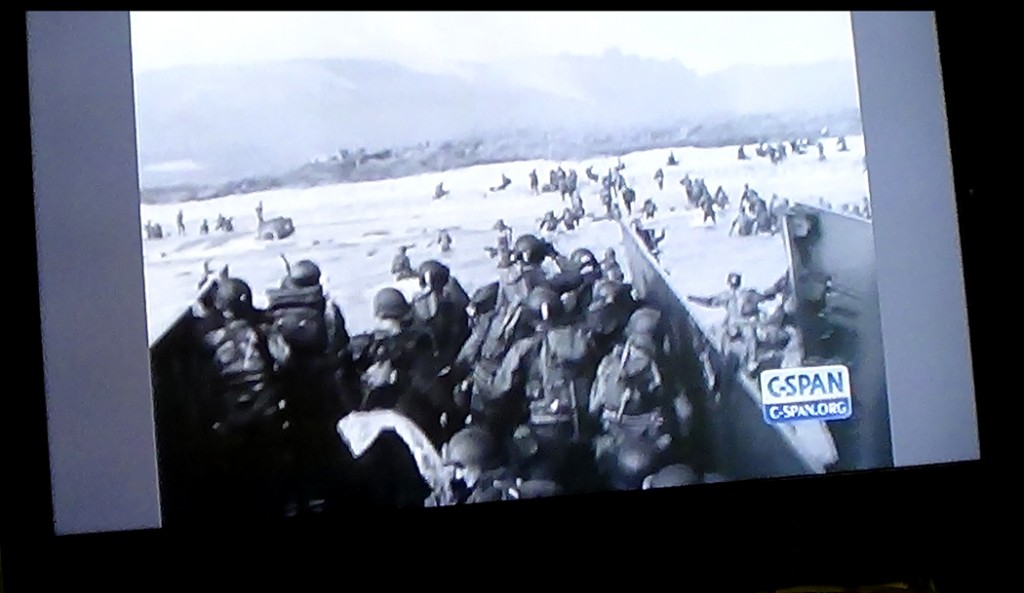






Leave a Reply